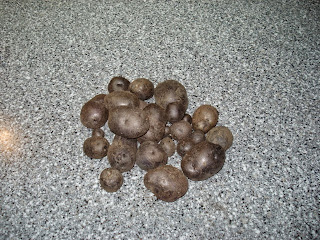 |
| The University of Colorado Greenhouse on East Campus |
On the
beautiful fall afternoon of November 14, I had the opportunity to tour the University of Colorado Greenhouse on East Campus
with Director of Plant Science Facilities Tom Lemieux. The tour started with a
brief discussion of bio security and tobacco mosaic virus. This virus can
affect a broad range of plant species and is usually transmitted by humans.
After precautionary hand washing, the doors opened and the tour group of 20
citizens were allowed to enter the amazing collection of plants from around the
world.
Every plant
in the collection has a story, and Tom Lemieux knows them all. He has traveled
the world collecting specimen to add to the greenhouse. The tour touched on
some highlights because it would take days to meet all the individual plants.
It felt like taking a world voyage or visiting a zoo, seeing plants from South
America and Asia and every continent in between. Many plants from the collection
have been donated to the Denver Botanic Gardens when they have outgrown the
space at CU. The greenhouse itself even has a story, originally used in
California then transported to Boulder and reconfigured for CU.
Blooms
from two Aristolochia species.
The plants in
the collection are not just for admiration.
They are working plants, being used for research and education. Tom
Lemieux used the tour to educate the group by introducing the concept of
convergent evolution. This is when unrelated organisms develop similar characteristics to cope
with similar environmental
challenges. Tom Lemieux presented a selection of succulents that all looked
very similar and asked which were cacti. Of the group, only 2 were true cacti
and the others were related to euphorbia and other species. He also showed us plants that have developed
mutualistic relationships with insects such as ants and flies. We examined the specialized structures (and
odors) these plants have to benefit and attract these insects. There were a
couple of varieties of Dutchman's pipe (Aristolochia sp.) in bloom that
were gorgeous to see but not so nice to smell.
 |
| Plants demonstrating convergent evolution. From left to right Euphorbia obesa, Pseudolithos migiurtinus, and Eriosyce curvispina. |
I think I
could go on this tour over and over again and learn something new every
time. I recommend it for anyone who
loves to learn, enjoys plants, or both. The tour was organized in partnership
with the University
of Colorado Museum of Natural History. It is offered in the fall and
spring. The best way to find out about the tour is to join the museum's email
list. The tour filled up quickly and had a long waiting list, so sign up early.
It's well worth the short drive to Boulder.





































